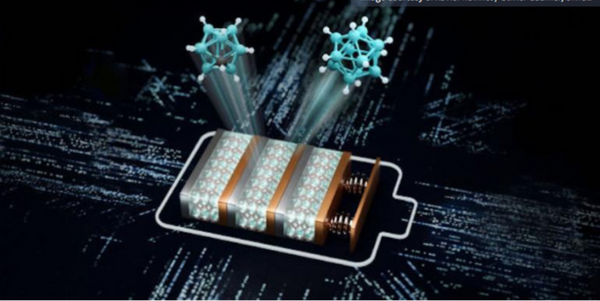The researchers will address a key challenge for sodium-based devices by altering known materials to enhance their conductivity.
Replacing lithium with sodium within battery chemistry is one of the solutions scientists have been focusing on in an attempt to address the challenges of sustaining the production of energy storage devices in the future.

Researchers at the University of Geneva (UNIGE) have come up with an efficient solution to the problem by developing a new solid-state electrolyte for sodium-based batteries that allows easier movement of sodium ions to create more efficient and potentially more efficient batteries.
A team led by University of Geneva professor Radovan Cerny has created a viable electrolyte for sodium batteries by altering the crystal structure of a material composed of carbon, boron and hydrogen, known as borocarbon hydride, allowing ions to move more efficiently. move. The research team tested the electrolyte to determine the pressure needed for the battery to function optimally.
The Lithium Problem
Lithium-ion batteries have become the standard for batteries, but they still face some challenges in future designs. The bottom line is that lithium is a finite natural resource.
The liquid electrolyte of lithium-ion batteries sometimes leaks from the battery, which can easily lead to dangerous situations such as fire or explosion.
However, sodium is more accessible, more abundant, and easier to recycle, making sodium a good candidate for replacing lithium in future battery chemistries. Also, sodium is safer than lithium.
However, developing sodium-based batteries is an entirely new production process for scientists, Professor Fabrizio Murgia of the Crystallography Laboratory of the Faculty of Science at the University of Geneva explained in a press statement that "researchers are reluctant to use unfamiliar techniques."
Researchers have come up with designs to replace lithium with sodium, with varying degrees of success. Researchers at the University of Geneva have developed a new solid-state electrolyte, hydridoborate, which is a combination of boron and hydrogen but with a modified structure.
Cerny explained that the researchers tweaked the structure of sodium carbo-hydridoborate, which makes it conductive and efficiently transports sodium ions.
To achieve this, the research team subjected the compound to high shocks inside a ball mill, creating high temperatures, Cerny said. It's an energy-saving method that the research team borrowed from the cement industry, which is widely used.
The researchers published a paper on the project in the journal ACS Applied Materials & Interfaces.
test electrolyte
The researchers tested a new solid-state electrolyte in a sodium-based battery, locating the electrolyte in the battery so that it could stay firmly in place while in contact with the battery's positive and negative electrodes, the anode and cathode.
To achieve this, appropriate pressure needs to be applied using screws or springs, the researchers explain. The team experimented with prototype batteries and found that the ideal pressure should be around 400 atmospheres, which is equivalent to the pressure at a depth of 4,000 meters underwater. They say this optimum pressure can be applied with just a few turns of the screw.
Another paper, published in Advanced Materials Interfaces, details the research team's work in this regard.
The team's two findings pave the way for large-scale production of sodium-ion batteries, charting an easier path for industry adoption, Murgia said.
"Because of the slightly heavier weight of these batteries, they can be used to power cars, and the cost of making the batteries has yet to be assessed, and it's important now that the industry realizes that the materials we've discovered are very promising," Murgia said in a press statement. meaningful."

